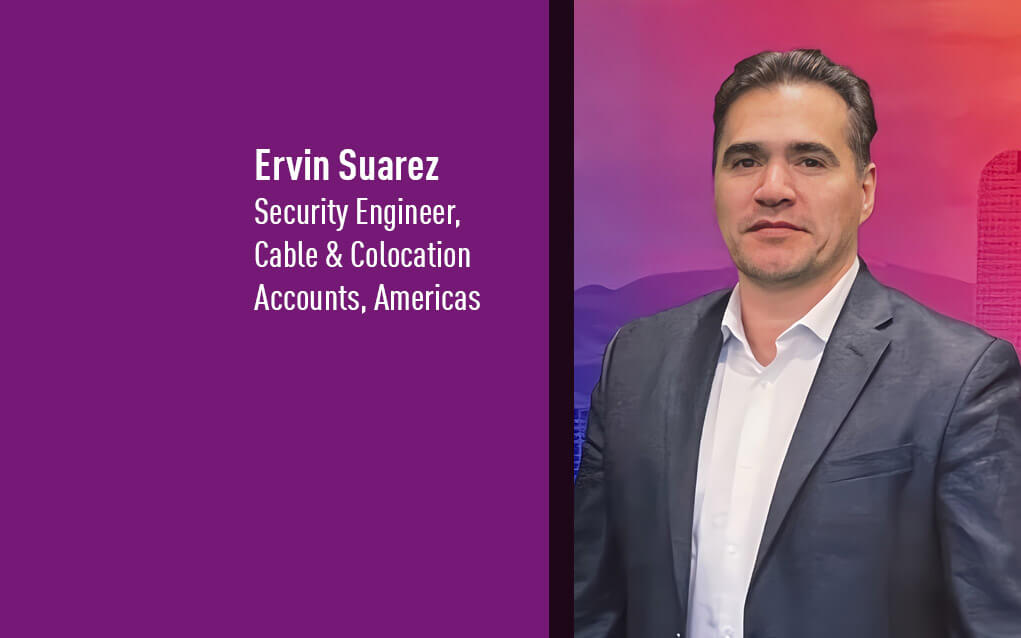In recent years, Natural Language Processing (NLP) has undergone a pivotal shift with the emergence of Large Language Models (LLMs) like OpenAI’s GPT-3 and Google’s BERT. These models, characterized by their large number of parameters and training on extensive text corpora, signify an innovative advancement in…
Intel Develops Largest Neuromorphic System for Eco-Friendly AI Advancements
Intel has recently announced the creation of Hala Point, the world’s largest neuromorphic system, marking a significant step towards more sustainable and efficient artificial intelligence. Deployed initially at Sandia National Laboratories, Hala Point uses Intel’s advanced Loihi 2 processor and builds on the success of its…
Samsung aims to boost on-device AI with LPDDR5X DRAM
Samsung has unveiled the industry’s first LPDDR5X DRAM with speeds of up to 10.7 gigabits-per-second (Gbps), setting a new benchmark for the industry. Achieved through the use of cutting-edge 12 nanometer (nm)-class process technology, Samsung has not only attained the highest performance metrics but also the…
Kamal Ahluwalia, Ikigai Labs: How to take your business to the next level with generative AI – AI News
AI News caught up with president of Ikigai Labs, Kamal Ahluwalia, to discuss all things gen AI, including top tips on how to adopt and utilise the tech, and the importance of embedding ethics into AI design. Could you tell us a little bit about Ikigai…
Every Villain In Insomniac’s Spider-Man Universe

The alien symbiote was captured and leveraged during research to try and cure Harry Osborn of his Oshtoran Syndrome, but it does much more than that. The symbiote grants Harry various powers, making him nearly as capable as his friend Peter in fights. When Kraven stabs Peter, the symbiote bonds with him to save his life. Peter enjoys using the newfound powers granted to him by the symbiote, but it becomes obvious that it’s corrupting his emotions, leading him to a brutal fight with Miles. Peter finally removes the symbiote, but it bonds with Harry once again and becomes more aggressive. Together, they become Venom, a violent alien creature who attacks the city, killing Kraven, and spreading the symbiote influence throughout New York.
Thousands of New Yorkers are forcibly bonded with symbiotes, but the Spider-Men are able to stop Venom, thanks in large part to Peter’s past bonding with the symbiote and Mister Negative’s assistance to become Anti-Venom. Miles and Peter occupy Venom while Mary Jane destroys the meteorite that amplifies their influence. Following the fight and destruction of the meteorite, they’re able to remove the symbiote from Harry, but Harry is badly injured, leading Norman Osborn to develop a crusade against the Spider-Men.
Why enterprises are going hybrid and returning to colo! – CyberTalk

By Ervin Suarez, Security Engineer for Cable and Colocation Accounts, Check Point Software Technologies.
I’ve been closely observing a fascinating shift in the IT landscape and wanted to share some insights with all of you, especially given how these changes could impact our industry.
Lately, there’s been a noticeable shift among enterprises back towards colocation (colo) services, while they’ve simultaneously embraced hybrid cloud models. This trend is intriguing and speaks volumes about the evolving needs and strategies of businesses when it comes to managing IT infrastructure.
Why the shift, you might ask?
Cost efficiency: The reality is, while cloud services offer unmatched scalability, they can also escalate costs for specific workloads or data-intensive operations. Colocation offers a more predictable expense model, which is especially appealing for operations with stable demand.
Enhanced control and security: With colocation, businesses gain direct control over their physical servers, a non-negotiable for industries under tight regulatory scrutiny. This control translates into superior compliance and security, aligned with stringent industry standards.
Optimized performance: By strategically choosing colo sites, enterprises can drastically reduce latency for critical applications, ensuring high-performance outputs that cloud environments can sometimes struggle to match.
Flexibility and scalability: The hybrid model shines by offering the best of both worlds – colo for critical, stable workloads and cloud services for scalable, flexible needs. This balance is crucial for businesses that aim to maintain agility without compromising on reliability.
Robust business continuity: Distributing resources between colo and cloud environments enhances disaster recovery strategies, leveraging colo’s inherent infrastructure resilience and reliability.
Compliance with data sovereignty: In an era where data privacy reigns supreme, colocation facilities offer a strategic advantage by allowing businesses to physically host data within required jurisdictions, meeting stringent regulatory demands head-on.
What does this mean for us?
The resurgence in colocation interest, alongside a robust adoption of hybrid cloud strategies, indicates a balanced, pragmatic approach to digital infrastructure management. Businesses are seeking to optimize costs without sacrificing control, performance, or compliance.
We’re also seeing increasing collaborations between cloud and colo providers, simplifying the transition to hybrid models for enterprises. This partnership ecosystem paves the way for innovative solutions, making hybrid strategies more accessible and effective.
Innovations in networking and connectivity continue to blur the lines between colo and cloud, enabling more seamless management of distributed IT resources.
As we navigate these changes, it’s clear that flexibility, strategic planning, and an eye for optimization are key to leveraging the best of both colo and cloud worlds. The move towards hybrid infrastructures isn’t just a trend; it’s a strategic realignment of IT resources to better meet the demands of modern business operations.
This shift is supported by several trends and developments in the industry:
1. Resurgence of colocation: Colocation is becoming crucial again as companies become increasingly dependent on robust IT infrastructure to manage the growing volume of data. Traditional colocation provides reliable and secure options for IT infrastructure, which is critical given the rising importance of data privacy and security. Colocation solutions offer businesses a way to protect their data, ensure high availability, and achieve resilience while saving on capital expenditure and operational costs. This is because colocation allows businesses to leverage existing, well-maintained infrastructures which would otherwise require significant upfront investment (Datacenters).
2. Hybrid cloud flexibility: Hybrid cloud models are being recognized for their ability to provide agility and flexibility in the technology stack. This model allows enterprises to not only meet their current technological needs but also prepare for future demands. The hybrid cloud’s capacity to integrate edge computing with cloud architectures enables more businesses to adopt this technology. It effectively lowers latency, reduces bandwidth requirements, and enhances resiliency against network outages. This adoption is visible across various sectors, including telecommunications, retail, manufacturing, and energy, indicating a broad-based validation of the hybrid cloud’s value (The Enterprisers Project).
3. Multi-cloud and vendor-neutral environments: Enterprises are also moving towards a more vendor-neutral approach in their cloud and colocation strategies. This shift is partly due to the need to avoid vendor lock-in, which can limit flexibility and control. The hybrid and multi-cloud architectures, comprised of combinations of public clouds, private clouds, and colocation data centers, allow enterprises to tailor their IT infrastructure to meet specific needs while ensuring that they can manage and integrate various cloud services effectively (PacketFabric).
In summary, the trends towards colocation and hybrid cloud are driven by a need for cost efficiency, control, security, flexibility, and strategic deployment of IT resources. These models not only help with optimizing current operations, but also assist with scaling future technologies and infrastructure needs. Enterprises are increasingly aware of these benefits and are adjusting their IT strategies to leverage colocation and hybrid cloud solutions as part of their broader digital transformation initiatives.
I’m keen to hear your thoughts and experiences on this shift. How do you see the hybrid model shaping the future of IT infrastructure in your field?
Managed firewall as a service – How secure is your data center?
As we navigate through the evolving landscape of IT infrastructure, with a noticeable shift towards colocation services and hybrid cloud models, I’m thrilled to share a bit about how Check Point Software is leading the way in enhancing security within these environments.
We’ve recently launched an innovative offering, Firewall as a Service (FWaaS), specifically designed to bolster the security posture of businesses leveraging colocation facilities.
Why Check Point’s FWaaS?
In the world of colocation, where businesses seek the perfect balance between control, cost, and flexibility, Check Point’s Managed Firewall as a Service stands out as a beacon of security excellence.
We understand the complexities of managing IT infrastructure across colo and cloud environments. That’s why we’ve introduced a solution that simplifies data center workflow orchestration and scales security on-demand, akin to spinning up servers in the cloud.
Our Managed FWaaS is not just a product, but a comprehensive security ecosystem. It’s designed to integrate seamlessly with your existing security infrastructure, protecting both private and public network services from a plethora of threats that can undermine your business.
With a 98.8% catch rate, our service ensures unparalleled protection against cyber security threats, providing peace of mind in an era where security breaches are all too common.
What sets Check Point apart?
Ease of integration: Customers within a colocation facility can effortlessly connect to Check Point’s infrastructure, gaining access to a managed security cluster that’s fully maintained by our team of experts.
Comprehensive security: Our service covers all bases, from Firewall, VPN, IPS, application control, content awareness, URL filtering, anti-bot, anti-virus, anti-spam, threat emulation, to threat extraction. We manage and monitor everything, alerting you to high and critical events, ensuring your infrastructure remains secure against evolving threats.
Fully managed solution: Let our MSS experts take the wheel. We handle everything from initial setup, weekly operational changes, to yearly upgrades, allowing you to focus on core business functions without the hassle of managing security infrastructure.
Cyber insurance partnership: Recognizing the importance of comprehensive protection, we’ve partnered with Cysurance to offer cyber insurance, providing an extra layer of security and assurance for businesses in need.
Empower your security with Check Point’s FWaaS
Check Point’s Managed Firewall as a Service leverages our deep expertise to maintain your security assets, ensuring your business operates smoothly and securely, without the operational overhead. This allows organizations to scale up their security measures on-demand, mirroring the flexibility of public clouds but with the added benefit of Check Point’s industry-leading threat prevention and management.
In an era where businesses are increasingly leveraging colocation for its cost efficiency, flexibility, and enhanced control, Check Point provides a security solution that aligns perfectly with these needs. Our FWaaS offering ensures that businesses can enjoy the benefits of colocation and hybrid cloud models, with the confidence that their security is in the hands of the experts.
I’m excited about the possibilities this brings to our industry and am eager to discuss how we can support your business’s security needs in this changing landscape. Let’s embrace this shift together, with Check Point ensuring that our journey is secure.
The Next Nintendo Indie World Showcase Is Set For Tomorrow

With huge winter game releases behind us and huge summer announcements right around the corner, the games industry is set for a relatively quiet month or two. Luckily, Nintendo plans to briefly step in to fill that void. Today, it announced the next Indie World Showcase, a live stream event focused on the latest indie titles to come to the Switch, for tomorrow, April 17. The showcase will air at 7 AM PT/10 AM ET and last for around 20 minutes.
It’s in the name so it might be obvious to some, but don’t expect any first-party games or hardware announcements out of this event. An Indie World Showcase is also not the same thing as a Nintendo Partner Showcase, which is just a show about third party games. This can include indie titles (the last one had a trailer for Another Crab’s Treasure, for example) but also includes larger developers, like Sega or Atlus.
If that’s confusing, you can get a sense of the games that have been showcased in this type of presentation in the past by visiting the official Indie World site. Fans will most likely be clamoring for a trailer or release date for Hollow Knight: Silksong, the sequel to the 2017 bug-themed Metroidvania. But while it’s (hopefully) right around the corner, there’s no specific reason to believe it will appear at this event other than the fact that it’s an indie game coming to the Switch.
We won’t know until the Indie World Showcase properly airs tomorrow. When it does, you can watch it right here.
Navigating Global Compliance: The Role of AI in MedTech
In the rapidly evolving landscape of MedTech, where innovation intersects with stringent regulatory frameworks, staying compliant while driving progress can be a daunting challenge. Amidst the backdrop of complex regulatory landscapes and the increasing interconnectedness of global markets, the incorporation of cutting-edge technologies such as AI…
The 2024 Cybersecurity Outlook: Key Takeaways from Pentera’s State of Pentesting Report
Cyber threats are evolving at an unprecedented pace, and the threats have recently been amplified due to the ease of attacking critical infrastructure amidst the rise of Large Language Models (LLMs). Pentera’s 2024 State of Pentesting report sheds light on the pressing challenges and shifting paradigms…
Inside DBRX: Databricks Unleashes Powerful Open Source LLM
In the rapidly advancing field of large language models (LLMs), a new powerful model has emerged – DBRX, an open source model created by Databricks. This LLM is making waves with its state-of-the-art performance across a wide range of benchmarks, even rivaling the capabilities of industry…
